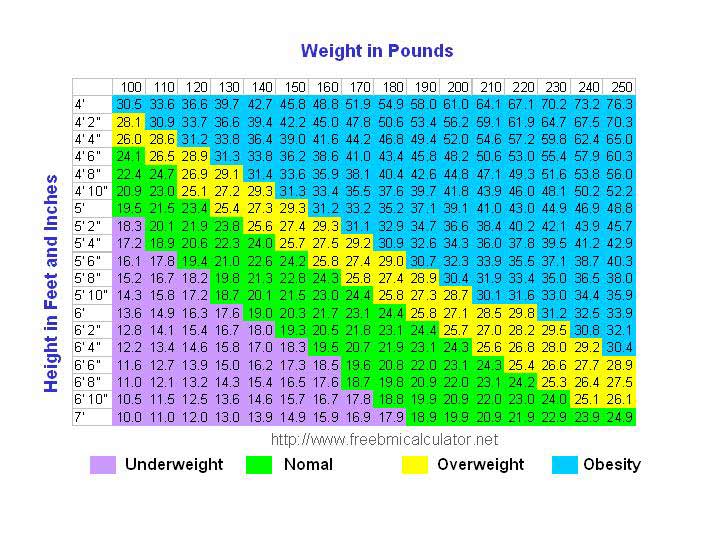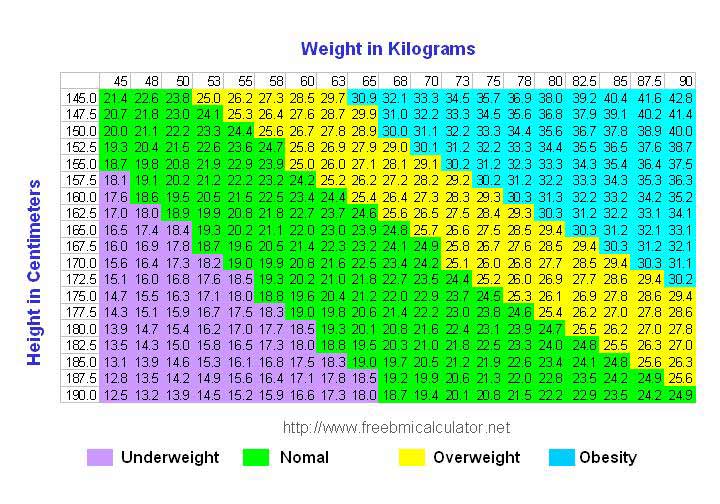|
BMI Chart
A bmi chart is the best way to learn your body mass index quickly, if you know your height and weight, and to identify rapidly whether your body weight is below, above (or dangerously above) average. Using the charts below you can quickly establish whether you need to lose weight, and go on to target your healthy diet plan safely and effectively. For example (we'll use the British/Imperial chart for this example but do scroll down a bit for the metric version), if you are 5'6'' and weigh 200lb, you probably know you need to lose weight. Looking at the chart, find your height on the vertical axis, and your weight on the horizontal one, and you will see this example indicates a BMI of 32.3. A bmi of less than 20 indicates you are UNDERWEIGHT Therefore the dieter in our example is currently obese and needs to lose weight for the good of his/her health, to bring their bmi back into the safe range. If they know their recommended calorie intake, they can use all the vegetarian diet suggestions in this website, whether counting calories to lose weight or following any vegetarian diet plan, to target an initial weight loss of 10lb, to move from the danger zone of 'obesity' to the yellow band of simply being overweight. Then if they continue to use low calorie recipes and increased awareness of calories in foods etc, they can set the next milestone to lose another 20lb to enter the 'normal' range. Here is the chart for imperial measurement preferrers:
However, it is important to use these bmi charts intelligently and with awareness of their limitations. They are indications of AVERAGE healthy weight and height correlations... a more sensitive calculation would use slightly different charts for men and women, but they remain blunt instruments at best. A 'normal' bmi does not indicate one is healthy. And a raised one doesnt mean you are not - most professional athletes and sports people, with high muscle mass, would indicate obesity on this chart, as it takes no account of what the body mass is actually composed of. In fact, all body builders, rugby professionals etc, would register as morbidly obese... they have high body weight relative to their height, but the bmi does NOT take account of how much of that weight is made up of fat. Muscle actually weighs MORE than fat, for the same volume of flesh... which is why you can be dieting and exercising simultaneously and for a while actually NOt lose weight... however you will be firming up and getting thinner during this time. Rather than getting hung up on charts and calculations, having a healthy vegetarian lifestyle - low in saturated fats, getting some regular exercise, not smoking, managing stress etc - is far more important to your health and wellbeing.
Click here to return from the bmi chart to main low calorie diet page
|








